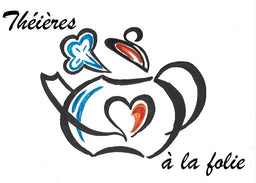Summary :
For a long time, “cloisonné” was only made under court supervision. In the 19th century the technique passed into the hands of the people and became one of the 8 greatest works of Yanjing. It grew and spread as a cottage industry in the surrounding area for some time. But the tedious cost of such craftsmanship caused the loss of cloisonné in these regions.
Cloisonné can be classified as metal, but because of its enamelling it is often incorrectly classified as porcelain.
A beautiful cloisonné production must have a lustrous color, a heavy and solid bone, clean and regular paths and brilliant gilding. There are many different cloisonné glazes, but the most common colors are sky blue (pale blue), sapphire blue (lapis lazuli), red (chicken blood), light green (grass green), green dark (vegetable jade, translucent), white (checkerboard), grape purple (vitreous amethyst), purple red (rose) and emerald blue (between sky blue and sapphire blue, with a bright color)
The principle of cloisonné is to trap the enamel in circuits formed by fine partitions made of flat copper wire soldered to the body of the object, the result being the colored patterns. This technique has very ancient origins in the Middle East. It was used by the Egyptian Pharaohs in the 19th century BC.
Enamels on metal must have been introduced to China during the Yuan dynasty. Surviving pieces from this era are rare and are found in imperial palaces on both sides of the Taiwan Strait. Most pieces are decorated with an established lotus motif: The flowers are in bloom and full, spreading, accompanied by small buds. The branches and leaves are fleshy and spread freely, adapting to the space assigned to them. Although the craft with its concepts of intertwined lotuses originated in Western Asia, the Chinese style has internalized it in its entirety without changing anything. Grape motifs are also sometimes found in symmetrical compositions.
The cloisonné process is complex.
- Manufacturing of the tire, or shaping the shape.
- Watermark or adhesion of fine flattened, pinched, broken threads to form varied and fine patterns.
- Welding at high temperature (900°) the brass wire patterns on the brass tire.
- Pointing (pointing blue): Enamel is a lustrous, opaque or translucent substance, obtained by the fusion of raw materials such as lead, borate and glass powder, which, combined with different oxidized metals, become glazes of different colors, also called glazes. When the enamel is cooled, it becomes solid and is then ground into a fine powder and mixed with water before being filled. The glazes are then added to the solvent to create glazes of different colors, and the different glazes are filled in using metal spatulas according to the contours of the filigree.
- Firing the blue: The enamels (called blue, because the first enamels were mostly blue) are fired in the kiln at a temperature of 800-1000°C to melt the enamel into powder. The size of the enamel is then reduced by approximately 1/3, and so that the surface is not irregular, it is necessary to fill it several times with enamel of the same color. Glazing was repeated two to three or four times to ensure that the surface of the enamel was flattened against the wire without pitting.
- Polishing: The piece is placed in water and polished with coarse gravel, yellow stones and charcoal to smooth out the unevenness of the blue enamel, then with charcoal and a scraper to smooth out the lines of copper, base lines and mouth lines that are not covered with blue enamel.
- Gilding: A flattened and polished cloisonné is acid washed, decontaminated and sanded, then placed in a gilding bath and ionized to allow the gold to adhere to the unglazed metal body. The purpose of gilding is to prevent corrosion and rust of the metal body and to make the object look shiny, new and glorious. After washing and drying, the piece is then finished with a beautiful cloisonné.
The Chinese, who already had metallurgical skills for casting copper and for making glass and glaze, without forgetting their knowledge of forging, quickly took up cloisonné with success. Moreover, it fit with what they had already developed: jade, jewelry and fine porcelain.


